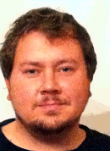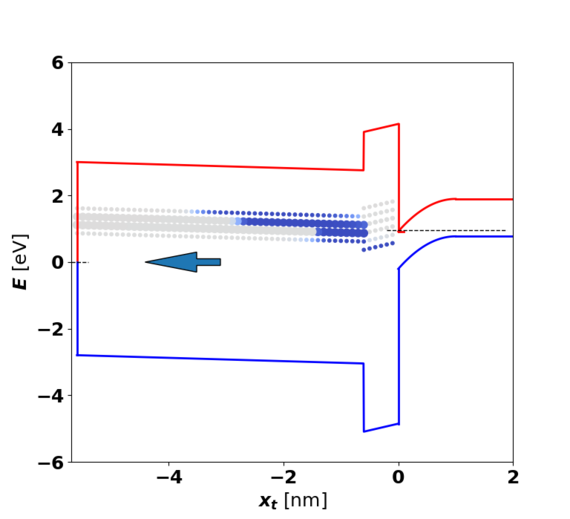 |
|
||||
BiographyDr. Mischa Thesberg is a Canadian researcher within the IuE. He has a B.Sc. (2008) in Computational Science from the University of Waterloo and an M.Sc. (2010) and Ph.D. (2014) in Computational Condensed Matter Physics from McMaster University. His research focuses on quantum transport and high-performance computing methods and his most recent interests include thermoelectrics, two-dimensional materials, novel nanoelectronics devices and quantum transport formalisms such as the Non-Equilibrium Green's Function (NEGF) approach. |
|||||
Modeling of the Competition Between Ferroelectric Switching and Charge Trapping
Over the last few years, an old technology that had previously been relegated to sporadic and niche applications is seeing a potential resurgence: ferroelectric devices. Ferroelectric materials maintain a remnant electrical polarization when a voltage is applied across them that persists long after the voltage is gone. Thus, their integration into current solid-state devices allows for the creation of computer memories (ferroelectric RAMs or just FeRAMs) or even potentially new all-in-one devices that act simultaneously as both memory and logic devices (ferroelectric transistors or FeFETs).
These ideas are not new. In fact, in the early 1990s, FeRAMs were a promising technology used in consumer products, such as the Sony PlayStation 2. However, they were eventually eclipsed by the emergence of flash memory as the decade progressed. The reason for this is primarily due to ferroelectric materials' inability to be aggressively downscaled to small sizes - and thus allow more memory per chip - as they tend to lose their ferroelectricity when material layer thicknesses approach the nano-scale size required by modern computing technology. In 2011, however, an important discover was made. A common material, hafnium oxide, which has already seen widespread use and integration in modern computing devices, actually becomes a ferroelectric when applied in very thin layers.
With this discovery, there has been a flood of renewed interest in ferroelectric technology since it suggests nano-sized devices, capable of competing with current technologies, such as flash memory, may be possible. With this renewed interest, an old issue has once again come to the fore, however, namely the competition of charge trapping and ferroelectric switching.
Charge trapping is a common issue in all aggressively scaled devices as electrons are ejected from the conductive channel and become lodged and trapped in defects within the nearby insulating oxide. Unfortunately, the effect of these traps on the device is identical to the effect that a polarized ferroelectric material has on the same device. Thus, charge trapping can hide or even misrepresent the "0" or "1" polarization state of a ferroelectric memory. Furthermore, these trapped charges also exert electric fields on the ferroelectric itself, potentially switching it directly. In either case, the result is a potential corruption of data. Furthermore, there is also a feedback mechanism between these two effects, with switching either driving or hindering trapping and trapping driving or hindering switching, and thus, the combined physics can be strongly coupled and complex.
The primary focus of the work done this year has been to develop physical and computer models that are capable of modeling both these phenomena simultaneously. These models are validated against experimental data, and a current goal is also to use them to inform and develop a potential experimental protocol for characterizing the strength and nature of these effects present in a given real device, as well as to suggest new designs to combat the issue. The trapping physics is currently being handled by Comphy, a pre-existing code-base within the Institute, with the ferroelectric physics being handled by novel kinetic Monte Carlo models. A continuing goal of the work is also to promote these models to true 3D technology computer-aided design (TCAD) simulations integrated into the commercially available Global TCAD Solutions simulation suite.

Fig. 1: An energy band diagram showing both the ferroelectricity (the polarization state is indicated by the direction and size of the arrow) and filling of trapping states (indicated by filled or unfilled circles).


